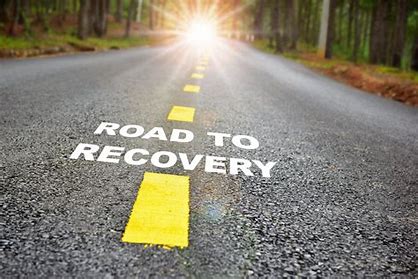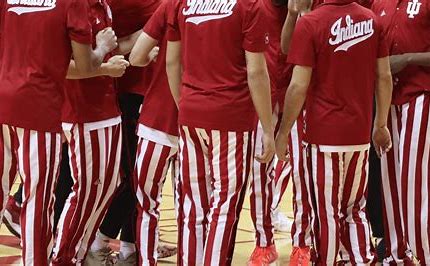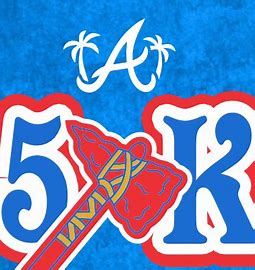I’m back into Storyworth, editing the life story of a neighbor that I wrote last year. I’m feeding him one chapter at a time so he can add any necessary corrections. This will help fill my down time as my nerves continue to heal. Soon, I’ll be able to get back in the pool and begin to gain some strength and stability. I get tired easily and can feel an annoying pinch in the back of my left leg. I sometimes wonder if I’ll ever get back to normal?
We’re going to see the Johnny Rawls Blues Band on Saturday night in downtown Venice. They are playing in the gazebo where I first watched them perform a couple of years ago. I had been monitoring their tour calendar, hoping for a return visit. We’ll have a day-late Valentine’s dinner before the outdoor show at a favorite BBQ spot, Gold Rush. I’m also going to Braves batting practice on Wednesday morning, as baseball begins Spring Training exercises. An active week for me!
My wife heads to school this morning, despite a bout of laryngitis. She also has tap class tonight, so I have double dog duty at the park. I also have a Chair Yoga class this morning and will transport a couple of neighbors in the golf cart. Lunch and dinner will be on my own. No doctor appointments today after visits with the Urologist and Chiropractor yesterday. Likely, I’ll spend some time in the sun this afternoon on the lanai, listening to another Jack Reacher book-on-tape or watching another Harlan Coben movie adaptation on the new big screen. No Blues for me today!
I’m back to a normal routine, as I continue to write my daily post. There is a hole in my lower back, now exposed after the bandage fell off. The sutures will come out in a few days and there is little pain and only hints of the burning sensation that kept me up at night. I’ve slept peacefully since the surgery but still find myself limping, as the nerves continue to heal. Day-to-day progress is hard to measure but any discomfort has moved from my upper thigh to the back of my leg, similar to a hamstring injury. I hobbled down the street to a birthday party two nights ago and to and from a Super Bowl Party last night. In both cases, I confined myself to a chair once I got there.
My muscles are very weak, and it will probably be weeks before I get back to the gym. I’m very confident that the cyst they removed in surgery was the cause of my sciatica, dating back to nearly a year ago. I’ve suffered through physical therapy, steroid injections, and failed painkillers. Natural healing, followed by exercise will eventually get me back to normal. I’ve done my share of whining and feeling sorry for myself, but at least I now have a solution. I feel for those who suffer from ailments that seem to have no specific cause.
The Super Bowl was meaningless to me and I.U. basketball is as good as dead, so my passion for sports has disappeared. I watched some golf yesterday that looks so easy with these pros. Pickleball and tennis have little appeal, even when I’m healthy. Movies, books on tape, and documentaries occupy most of my idol time.
My poor wife is frustrated because of my recent snoring habit, certainly a biproduct of the pain killers I’ve been taking. I’ve eased myself off everything but Advil, so maybe now she can get some rest after taking care of me all day. I’m on the road to recovery!
Dusty May, once an I.U. basketball student manager in Bloomington, returned to town and showed why he should be the next Hoosier coach, or is it too late? Mike Woodson did not get the rebound he was hoping for and watched the rival Wolverines get to sixty-points first and ultimately win the game. Another ugly ending in Assembly Hall where home court should prevail.
I.U. was down by as much as 18-points with 1:07 remaining in the first half, 43-25 on a Tre Donaldson layup. The Hoosiers stalled the Michigan effort to surpass sixty, getting within one 53-52 at the nine-minute mark, then tying the score at 59 before the Wolverines took the lead for good, 61-59 on a Vladislav Goldin dunk with 3:05 remaining. It was a classic study in how important the sixty score can be in college basketball. It’s the mark of good defense and the magical standard for an I.U. victory for decades now. Get there first and win!
If the Hoosiers had somehow prevented the Goldin dunk, would the game have ended differently? Would “the magic of 60” have prevailed? Instead, Coach Mike Woodson once again hangs his head in defeat and the Hoosiers sadly find themselves in danger of not even making the cut for the BIG Ten tourney, let alone the Big Dance. Where was Mackenzie Mgbako in the first half, scoring all 15 of his points after the break? Oumar Ballo was on the bench for half the game and Anthony Leal should have shot more threes. He had a hot hand, including a last-second shot that meaninglessly went in from three-quarters court, unless you were betting the spread.
I.U. now begins the difficult search for a new head coach. Had circumstances been different, it would have been Dusty May. Instead, we’ve gone through seven men in the 25-years since Bob Knight was fired: Mike Davis, Kelvin Sampson, Dan Dakich, Tom Crean, Archie Miller, and Mike Woodson. It now looks like the Woodson era that ends with “retirement” will not have a magical finish after being “Dusted” by the Wolverines.
It was just after another frustrating loss to Nebraska that I could no longer watch I.U. basketball, let alone write about it. There was no Hoosier magic to keep my interest. Wins against Chattanooga and Winthrop were meaningless. Even a streak of Big Ten wins against Rutgers, Penn State, and U.S.C. could not restore my enthusiasm, somehow knowing that the team was headed for disaster. Iowa and Illinois proved my point, while Ohio State gave a glimpse of hope with an ugly overtime victory in Columbus. Then things really started to fall apart with losses to Northwestern, Maryland, and Purdue, all games that were winnable with good coaching and execution in the end. Instead, the fans turned on Mike
Woodson, demanding a leadership change. Boos replaced the cheers at Assembly Hall!
The Hoosiers stood a dismal 5-7 in conference play, but Coach Woodson is a Hoosier court legend. Removing him required surgical precision and so retirement was the agreed upon decision. He would continue to lead the team for the rest of the season, starting with Michigan and their coach Dusty May, his potential replacement. Brad Stevens, unlikely to leave the Celtics, is also on the short list, along with Chris Beard. In the meantime, Mike Woodson still has a slim chance to rescue his coaching reputation and the talented team he leads. Can the Hoosiers rise from the ashes?
It’s been since December 23rd, 46 days since I’ve written anything. It’s the longest stretch of inactivity since I started this blog. It’s good exercise for my fingers, although my tremors make it difficult to hit the right keys and can make writing quite difficult. I should probably use a voice function but fingers on keys feel good – more rewarding. My entries get little recognition, so this is all about personal therapy.
Sciatica pain has kept me from doing this blog. Sitting can be uncomfortable and being in pain does not provide much motivation for doing things. Netflix and books on tape keep me entertained, as I work on my tan, but also lead to many unproductive naps. Going to the gym has been limited to the stationary bike, more sitting on my butt. I’ve continued with chair yoga despite the limitations of my flexibility and lack of balance. I feel flabby and uncomfortable in my skin.
Yesterday, I finally got some relief. The surgeon removed a cyst that was choking my sciatic nerve. It apparently was a difficult procedure, but I obviously feel much better, as evidenced by my return to the keyboard. I hope to get back on track but need to find more interesting topics other than pain management that has consumed my mind for months. No one really wants to read about others misfortune, since we all regularly experience pain in different ways. At least, mine can be fixed. I promise to be more positive in the future, once I can comfortably walk again. Right now, I’m like a staggering, peg-legged pirate on an unsteady plank.
I’m lucky that I sought a second opinion. I was initially referred to a pain management doctor. The first steroid injection seemed to help, but the second and third seemed to aggravate the sciatic nerve. It was like I had a constant knot in my thigh, coupled with the burning sensations down my left leg. Nighttime was particularly difficult finding a comfortable position. Lying down seemed to aggravate these nerves even more and it felt like acid was dripping down my left leg; it was literally on fire! After this surgery, I didn’t have those uncomfortable sensations last night, an indication that the sciatic nerve is already healing. I can only hope this continues. When the pain management doctor suggested an insert called “The Minuteman,” I asked around for others that had gone through this or knew someone who had? After little feedback, I consulted a neurosurgeon that had done spinal work on several neighbors.
There were more delays getting in to see him, and the pain persisted, as it has for the last year. “The Minuteman,” would have been an expensive, unnecessary surgery, since the cyst issue would not have been resolved and eliminated. For the first time, I feel like I’m on the way to recovery and made a good choice looking for another option.
Our poor, 15-year-old schnauzer Tally also feels the discomfort of arthritis, and I can clearly relate. When they took away the Advil a week prior to surgery, I could feel every aching joint in my body. Tally and I were on a similar path, and I wish we could help her more. Her one-year-old sister Fosse continues to be the Energizer Bunny and the envy of both of us. Tally also had an upset stomach this morning and ignored her treats, a rare occurrence. Finally, she ate enough grass to puke on our rug. Actually, it was a welcome sight to watch her then collapse in relief and eventually head to her bed, despite the cleanup. She’ll rest, like me, this afternoon. The next step for me is to have my lower back sutures taken out next week, as I really feel like I’m all stitched up and ready to scream, “I’m Back.”
Christmas Cheer
Twenty- Five years,
Of Christmas cheer.
So Happy Together.
With family near.
Megan on her way,
And Miranda soon.
It’s as big an event,
As the one every June.
Gifts for the kids,
And leg of lamb.
While the pups will expect,
A big bite of ham.
We got to four continents,
And my fiftieth, Maine.
But most of this year,
I’ve been in pain.
You’ve been very loving,
Always by my side.
You deserve gold,
But sadly denied.
Medical bills & auto repairs,
Have eaten our reserves.
While the fireplace and hurricanes,
Have thrown us curves.
A Limoges souvenir,
From our Majorca adventure.
Is all I can offer,
For your loyal indenture.
I’ve moaned and snored,
Hobbled and complained.
But you keep smiling,
Though patience strained.
For better or worse,
You took on a lot.
Your heart is much bigger,
Than the new parts I got.
Mike’s in there somewhere,
Not the stranger in your bed.
“I love you more.”
Is easily now said.
Hopefully the new year,
Will bring him back.
And you can once again,
Plan and pack.
It’s now been eleven months since heart surgery and other than the scars there is little evidence. My left leg continues to be the biggest issue in this recovery, a factor that can only be assumed to be a by-product of the surgical procedures. Nonetheless, it was never once a concern prior to the operation while undoubtedly the biggest obstacle in my recovery. The sciatica pain keeps me awake at night and limits my ability to walk or exercise despite three injection attempts to heal the inherent damages.
I hobble to the fitness center nearly every day, hoping to one day regain the stamina that enabled me to run every day the past fifteen years. Where is the old me? I do about 45-minutes on the stationary bike, cautiously lift some lighter weights, and occasionally walk a mile or so on the treadmill. Discomfort in the form of a Charlie Horse in my left thigh and balance are my enemies. I don’t know if I’ll ever be able to run again like the old me.
Pain medication helps me sleep but makes me groggy in the morning. I’ll discuss the options with my doctor during my upcoming appointment. The steroids seem to have aggravated rather than soothed my nerves as expected. Surgery is probably in my future as arthritis continues to eat at my spine. While I paid strict attention to my knees and hips all these years, it was apparently my spine that took the brunt of all those miles. Time to pay the piper!
My heart seems to be functioning well, and my breastbone has finally healed. It no longer hurts to cough. However, all my focus has been on the leg pain, so it’s easy to ignore all the other aches. I might even soon be able to get back into a pushup routine that would make my body feel normal again. It was apparently too soon when I tried to build up the reps a few months ago. I keep going back to a neighbor’s advice at the beginning of my recovery. He said, “the surgeon’s knife is a year long,” and I’m beginning to believe in that truth. The new year will provide a path to finding the old me.
After all those years of being spoiled, the IU basketball program, from a fan’s perspective, has been so hard to watch these past few decades. Most thought that it would be better this year until the trip to the Bahamas when reality struck. It was the chance to reestablish IU Basketball as a national contender, but instead the team dropped out of the Top 25 and Coach Woodson lost whatever following he had left. Another change in leadership would mean another step back and who is out there to take on that challenge? We needed some momentum leading into the BIG opener, with only Sam Houston of relatively little consequence coming into Assembly Hall.
Myles Rice came back from the dead to lead the Hoosiers with 19-points and Luke Goode came off the bench to hit five threes. In addition, Malik Reneau scored 18 points and grabbed 10 rebounds with five assists in the 97-71 thrashing. A 27-3 run left Indiana ahead 34-12 with six minutes left in the first half, but that lead began to fade as the Bearkats (4-5) got within nine early in the second half. It was the same inconsistency that comes from a team without a killer instinct. A Goode free throw, another part of his 18-point, career-high performance put the Hoosiers ahead 60-47 with 11:46 remaining. Sam Houston was 6-17 from downtown, a defensive performance that would need an encore to tackle Miami (Ohio), a team of renowned long ball snipers, ranked 15th nationally at just over 40-percent.
IU was up for the task but would likely need more of the same against Minnesota and then Nebraska, as the conference openers are scheduled earlier and earlier every year. On the offensive side, the Candy-Stripers had five players in double figures, with Oumar Ballo slamming down 18. Bryson Tucker and Kanaan Carlye, returning from injury, put on a show of sixteen and fourteen respectively. Malik Reneau and Mackenzie Mgbako also followed suit with a combined 29 while Myles Rice pulled his disappearing act once again. Tucker hit the magic mark with a free throw at 11:31 to all but seal the 82-67 victory.
Coach Woodson was now in danger of being outcoached again unless he could find a way to silence the upcoming Huskers and coach Fred Hoiberg, after 3-losses just last year alone. Nebraska won 86-70 in Lincoln, 85-70 in Bloomington, and 93-66 in the Big Ten Tournament quarter finals. The hot-shooting Huskers made a whopping 40 three-pointers in the routs, 12 the first time and 14 in the other two, while Keisei Tominaga scored 23 points, and had 71 total in the three games. He won’t be a factor after graduation, but Brice Williams is still around, having scored 56 points and made 9-of-16 threes against IU. It will truly be a test to see if the Hoosiers can continue to improve their defense and whether Woodson will still have a job.
It’s probably a bit too soon to write about the New Year, but I’m lost for positive subject matter. This blog has not been filled with humor and poetry as intended. Instead, it’s been a tough year of surgery, doctors, and pain that have taken away from the joy of travel. Yes, we did get to South America, Africa, Spain, and even Maine, my 50th state. But in between, were 10-days of hospitalization and over 90 doctor appointments. One thing led to another, so I’m hoping for a better year of health.
On the positive side, we did get a new puppy, Fosse, that seems to have extended the life of her older sister Tally, at 100 dog years and counting. My wife had a good year of staying away from doctors and finding some passion in teaching youngsters. She continues to tap dance, take the dogs to the bark park, go to the beach, play bridge, and exercise in the pool, all of the benefits of resort living. She’s also been very supportive with my recovery, doing more than her share of keeping up the house – a bundle of energy. I’m still very much in love with her. Thank You, Sweetie pie!
My grandchildren are getting taller and older, although they have recently been living on the East Coast of Florida, far from us and the need for our companionship. Our last hurrah as a family was Thanksgiving, but they will be back for Christmas. We have two new drivers in the family that have yet to make a solo trip. My days of shuttling them around are growing few.
I’ve been well educated about my aging body by Cardiologists, Physician Assistants, nurses, surgeons, Ophthalmologists, Neurologists, Urologists, rehab specialists, x-ray technicians, doctors that don’t necessarily end in “ist,” dentists, chiropractors, etc. Some are family members that have been extremely helpful in my time of need. “I don’t need no doctor,” has been my motto throughout life, until this year’s barrage. Worst of all, I had to give up my running streak of 15-years, the foundation of my health.
My muscles are now disturbingly flabbier and I’m currently about 10-pounds heavier, despite daily trips to the fitness center. Running always kept the weight off, while the winter months and holiday libations have always been a problem. I do still have a Florida tan, so I look pretty good on the outside, although rusted out on the inside, as my poem reads: (See post #1811). Unbelievably, IU football has made the College Football Playoffs!
I’ve had my share of problems, but when I look around our retirement neighborhood or stop by the hospital, I really have very little to complain about. I’ve also lost a number of high school classmates this year. Thankfully, I haven’t been sick once, despite all the time I’ve spent in the unhealthy environment of medical offices or a wife that regularly hangs out with first graders. I’m just hoping for fewer doctors in 2025!
I’m probably more tired and sore than when I did my first marathon back in 1979. It was certainly a humbling experience, finishing a distant last of about 500 participants in today’s Atlanta Braves Tomahawk 5k. I earned my third medal in the 6th year of its existence, crossing the ballpark finish line in about 65 minutes. I was in last place from beginning to end, dragging my bum leg in the chilly conditions. Even the strollers and kids were faster! It was both uncomfortable and embarrassing with both a police vehicle and golf cart at my heels. Race officials were dissembling the course as I passed and, in some cases, just before I got there. It was annoying having these volunteers pushing me along, but they were anxious to get home. Although tempted to jog, I simply couldn’t go any faster.
It was as slow as I’ve run any race in my life, and I’ve done hundreds. It was also the longest I’ve walked since heart surgery at the beginning of the year. I strongly considered not doing it, but it’s been a Holiday tradition since we moved to Florida nearly four years ago. We were traveling the one year that I missed it, so determination earned my third medallion. I started the day keeping warm in the car of two friends, who won their 80 and 85+ age-groups. They left me in the dust, but I joined them for the awards ceremony after the included celebration breakfast. There was no award for finishing last, but I’ve never won my age division since a winter race in my early thirties when no one else showed up. Even at a healthy 72, I couldn’t compete with my peers on a good day.
This year it was just a stubborn matter of finishing despite nagging sciatica and back pain. I do get another steroid injection in a few days, but these procedures have done little to reduce my discomfort and stiffness. I can’t say that I was in constant pain throughout the 5k, but it was not easy being a gimp. I have a high tolerance at this point, but it was still difficult to move. The good news is that if I do it again next year, I may be faster, but it will be another year before I get into the 75+ division, if that even helps. I keep trying to increase my speed and mileage but there always seems to be a setback. I’ll start training for next year after my upcoming procedure. Chop! Chop!









